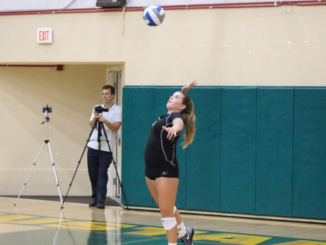
By Catelyn DiLeva
Staff Writer
Students in the state of California are required to pass a fitness test before graduating high school. However, it is unfair that Costa requires all students of the same age, despite differences in medical conditions, body types and athletic capabilities, to be held to the same standards and be tested in the same manner.
As stated by Independent Study Athletics Coordinator Denise Anderson, if students can prove with medical records that they are unable to run because of a medical condition, then the students will not have to run. Although this is helpful for certain students, those who are naturally overweight may not always be able to prove anything medically, according to Anderson. Therefore, the fitness requirement should be adjusted for each and every student.
As stated by Anderson, students must pass five out of the six components on the fitness test; however, the mile run is the one component that students must pass. This is an unfair goal to set for every student, because not all students are born with the same abilities to run. In addition, the alternative for those who do not pass the components is not sufficient.
Costa encourage students who do not pass the fitness test to take four years of PE instead, as stated by Anderson, but this requirement can pose an inconvenience for some as it may require them to adjust their schedule.
In addition, each student who is in the same grade level must run the mile under the same time. Even if students are the same age, because of the different body types of each student, it is unfair to require them to meet all of the same standards. According to Anderson, some football players may have a bigger build and more muscle weight to carry, which may make it so they take a longer time to run the mile. Therefore, it is evident that a student’s mile time is very relative. As a result, students should solely be required to take a test that corresponds to their specific athletic capabilities.
In addition, overall BMI should be taken into more consideration when setting regulations for fitness tests. Currently, Costa requires students to submit their BMI to the school. However, this information is not being used to benefit students; it is just received so the school has a record of it. The school should use the BMI information to personalize the requirements of the fitness test to each student.
Unfair standards for fitness testing additionally apply to those in different athletic activities. According to www.patient.info, students in different athletic activities have different forms of stamina, each working on varying types of athleticism. Therefore, for students who are in PE, versus those in Independent study PE or those on a sports team, being required to take the same fitness test is unfair because certain athletes may run more than the others, giving them an advantage on the test.
For instance, a dancer from Independent study PE and a soccer player on the Costa team both have to run an eight-minute mile, despite their different training processes. A measure of physical fitness should not solely be determined on how fast a person can run, and it is unfair to grade students on the same test because each student’s body and routines are different.
Students are being categorized into groups based on their physical abilities. Fitness testing should be altered so the tests and results are fair for all students, depending on the personal type of fitness that they may involve themselves in.




Leave a Reply